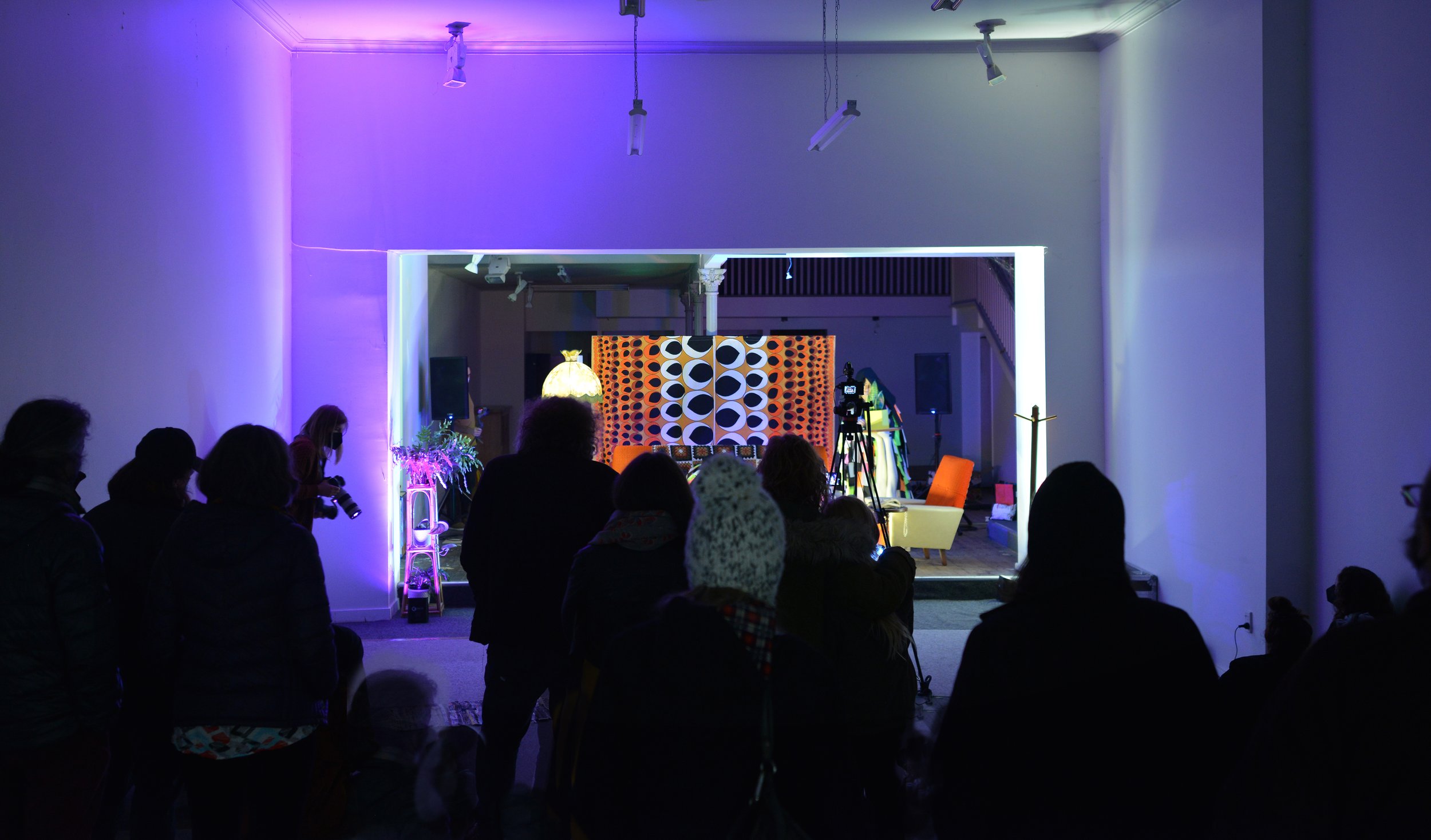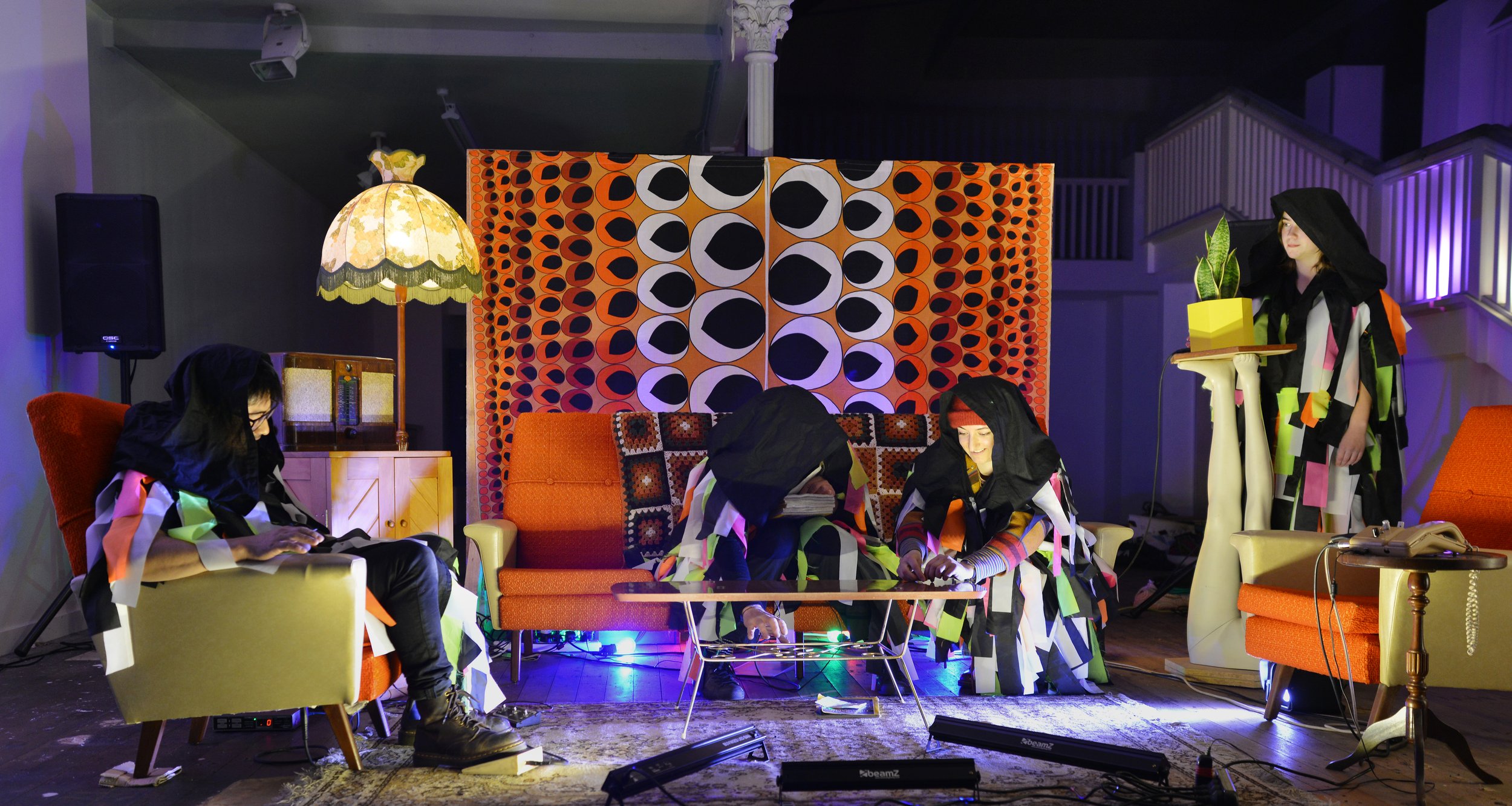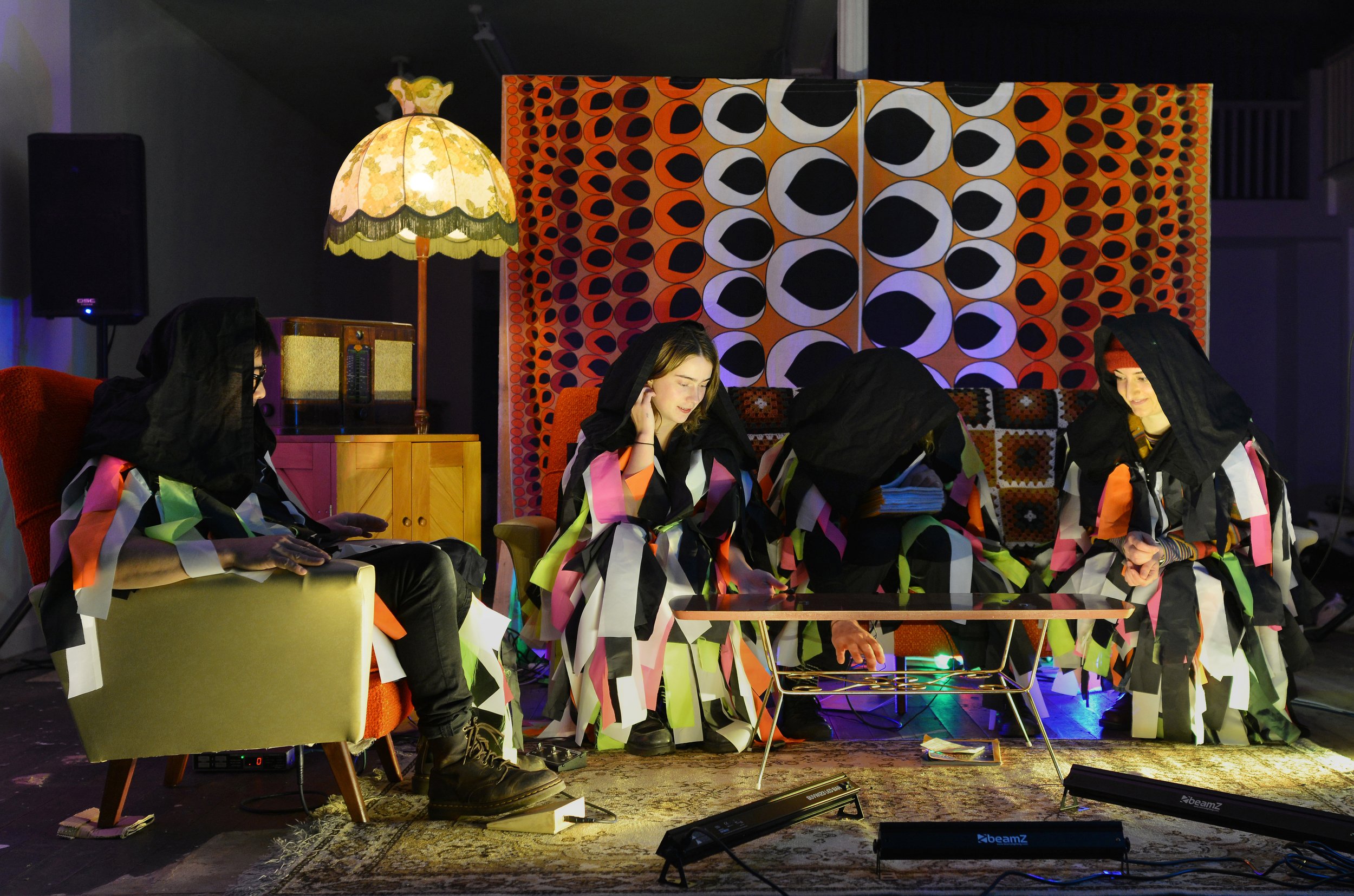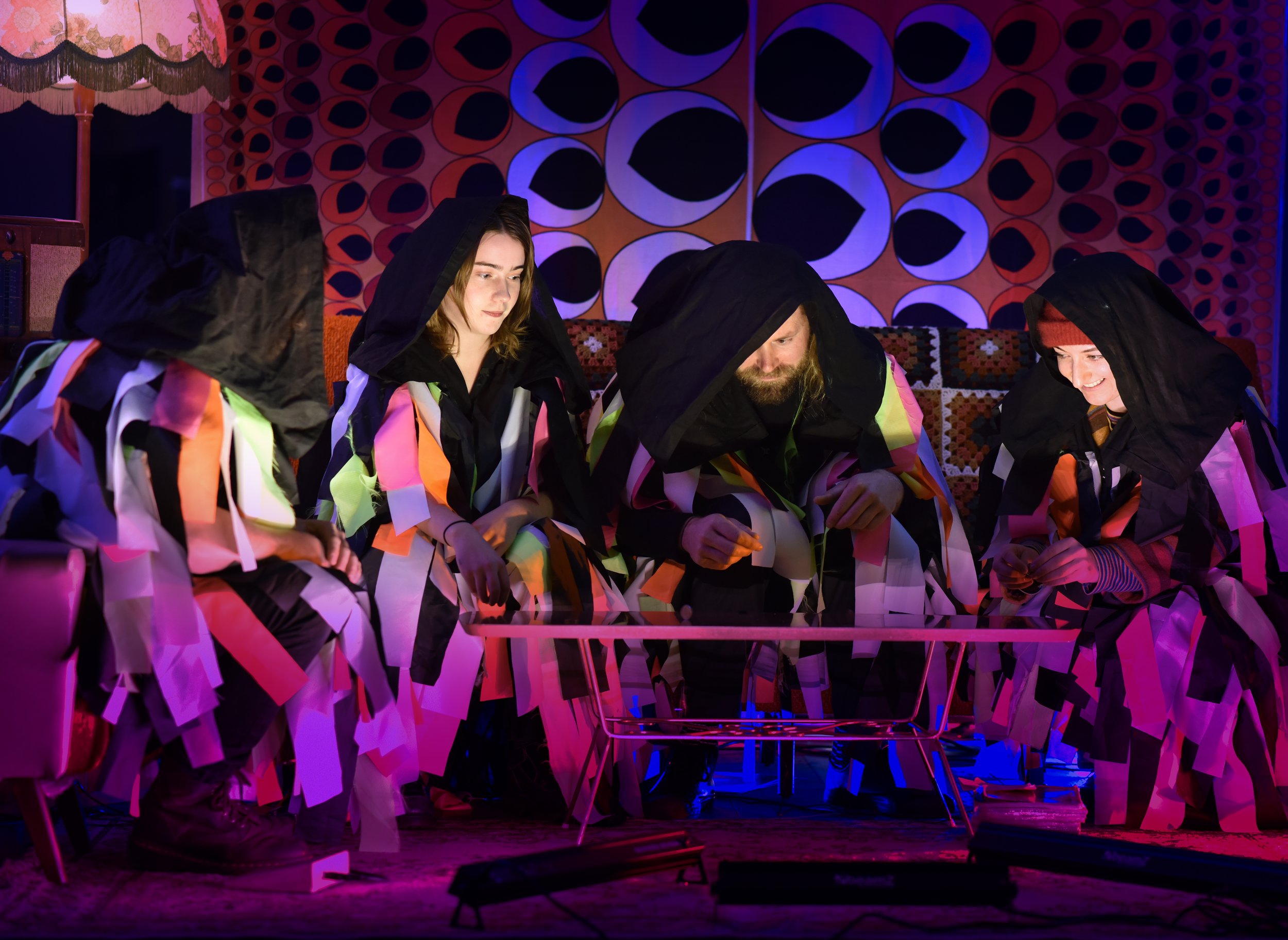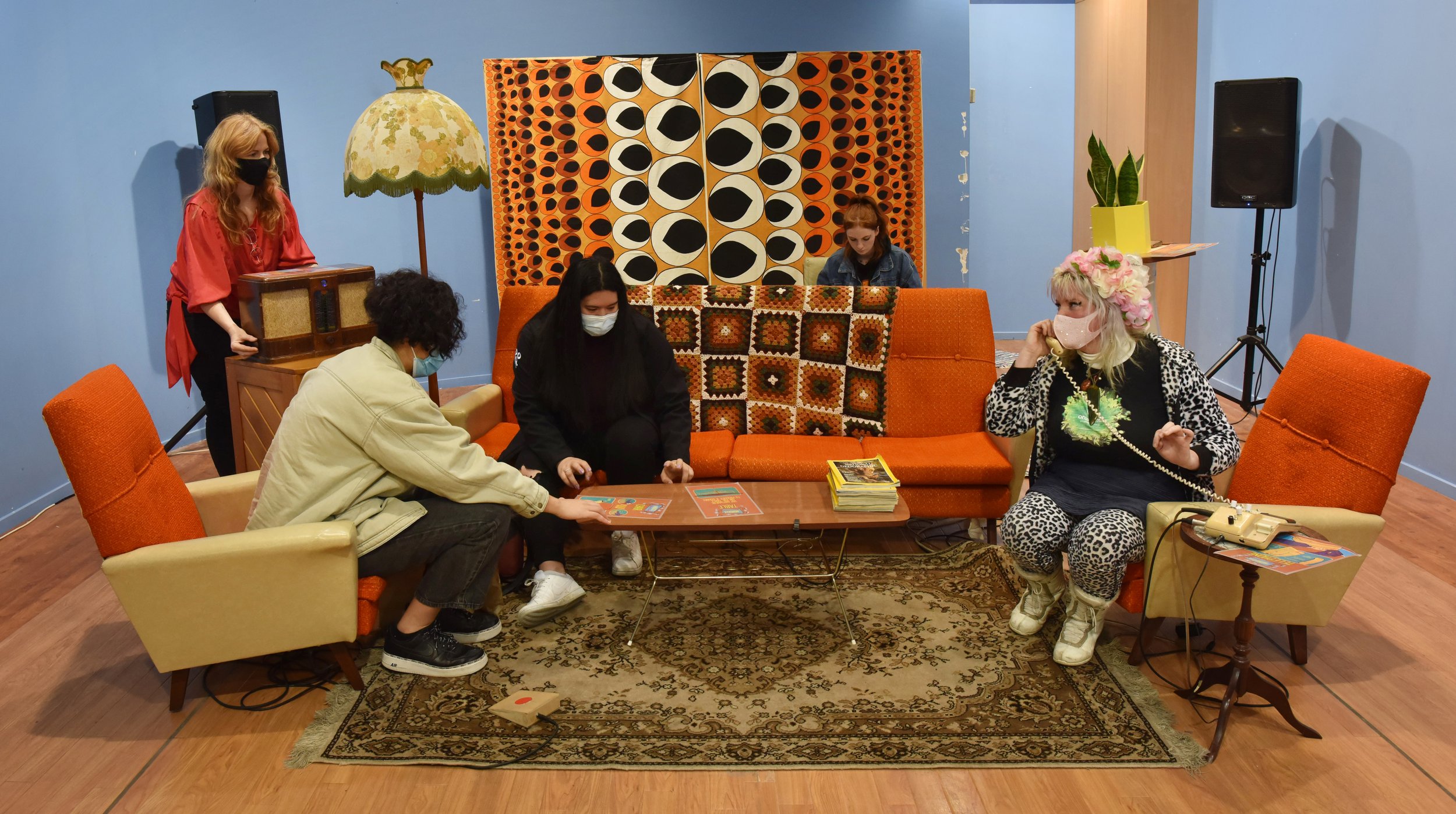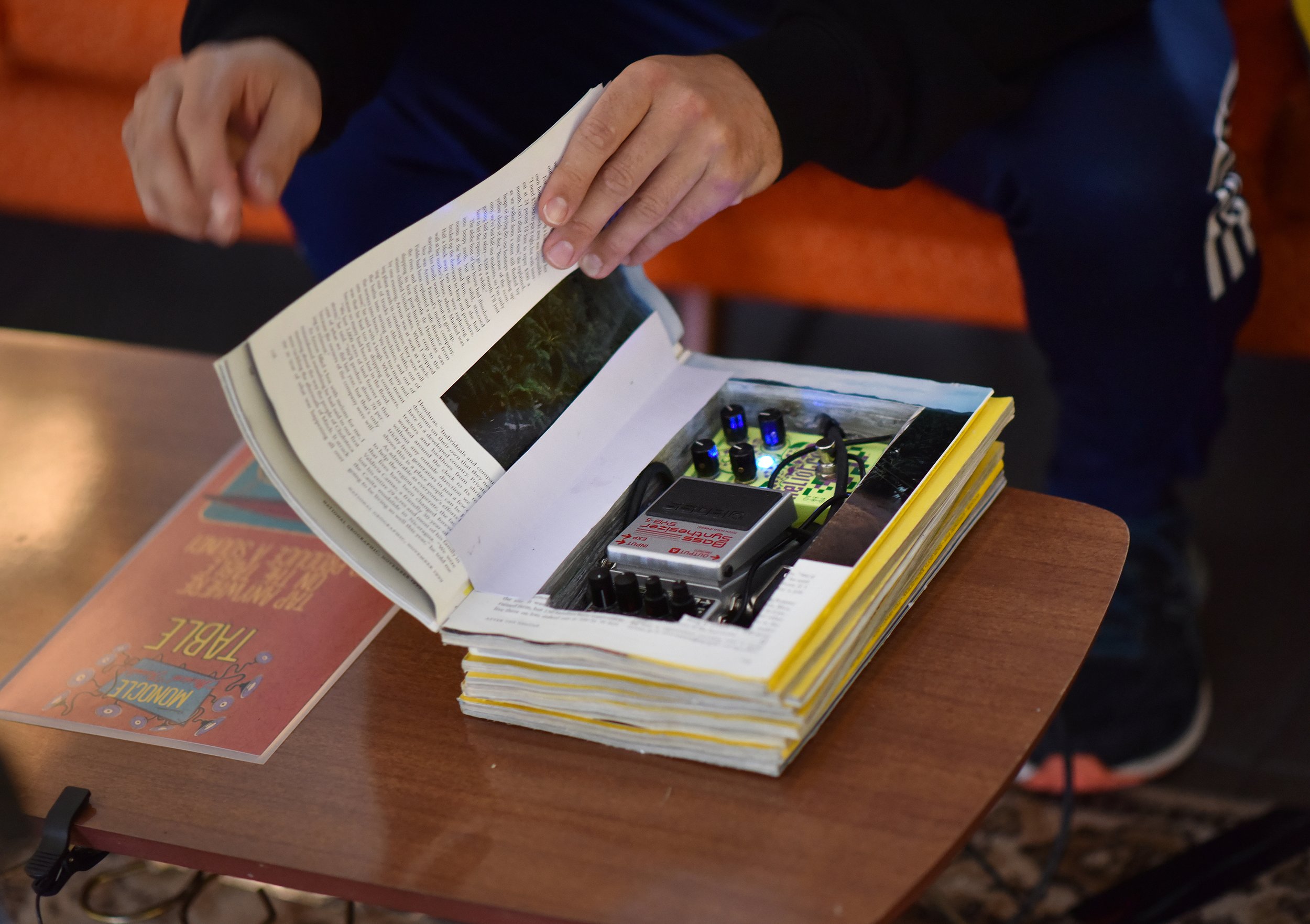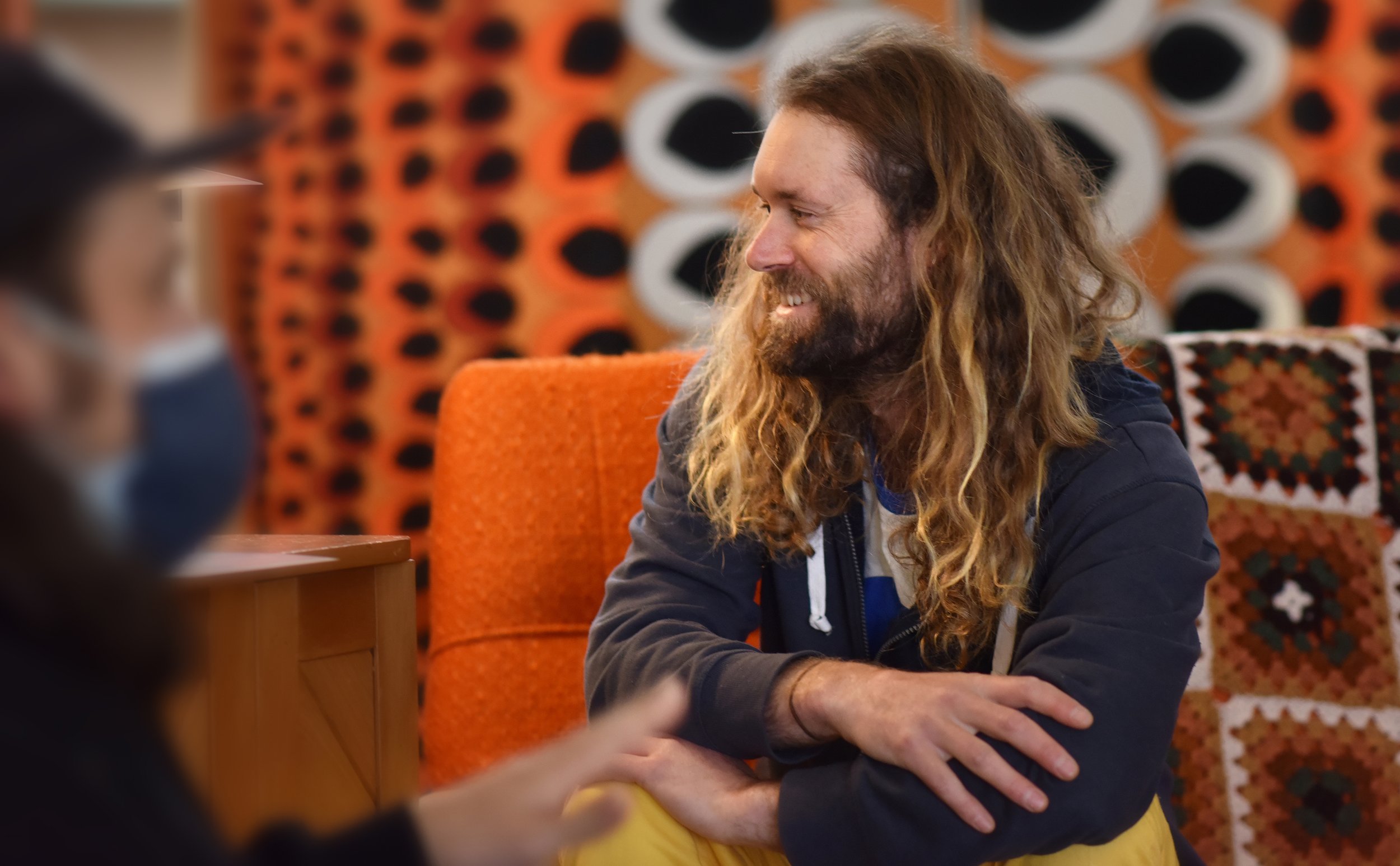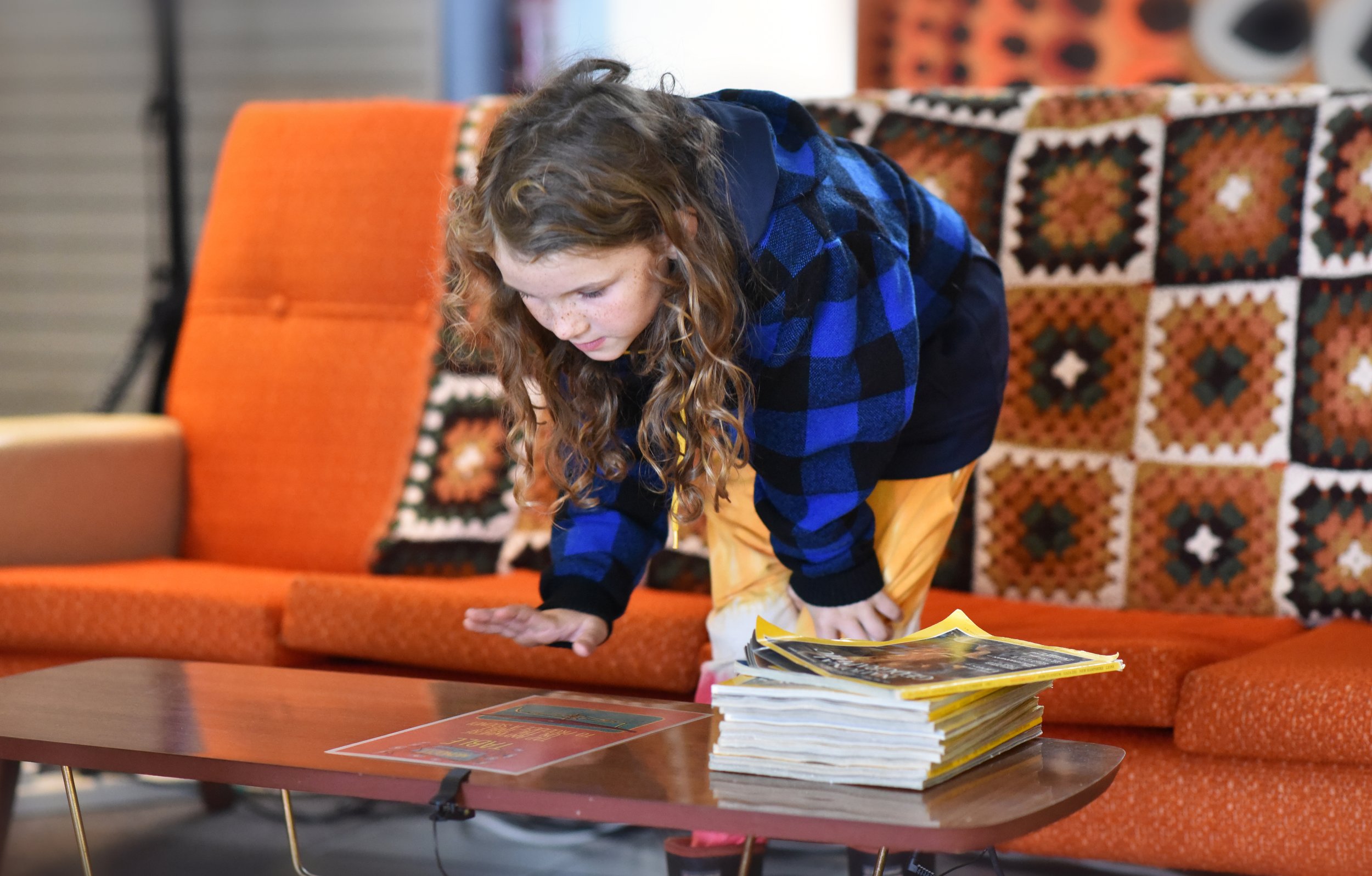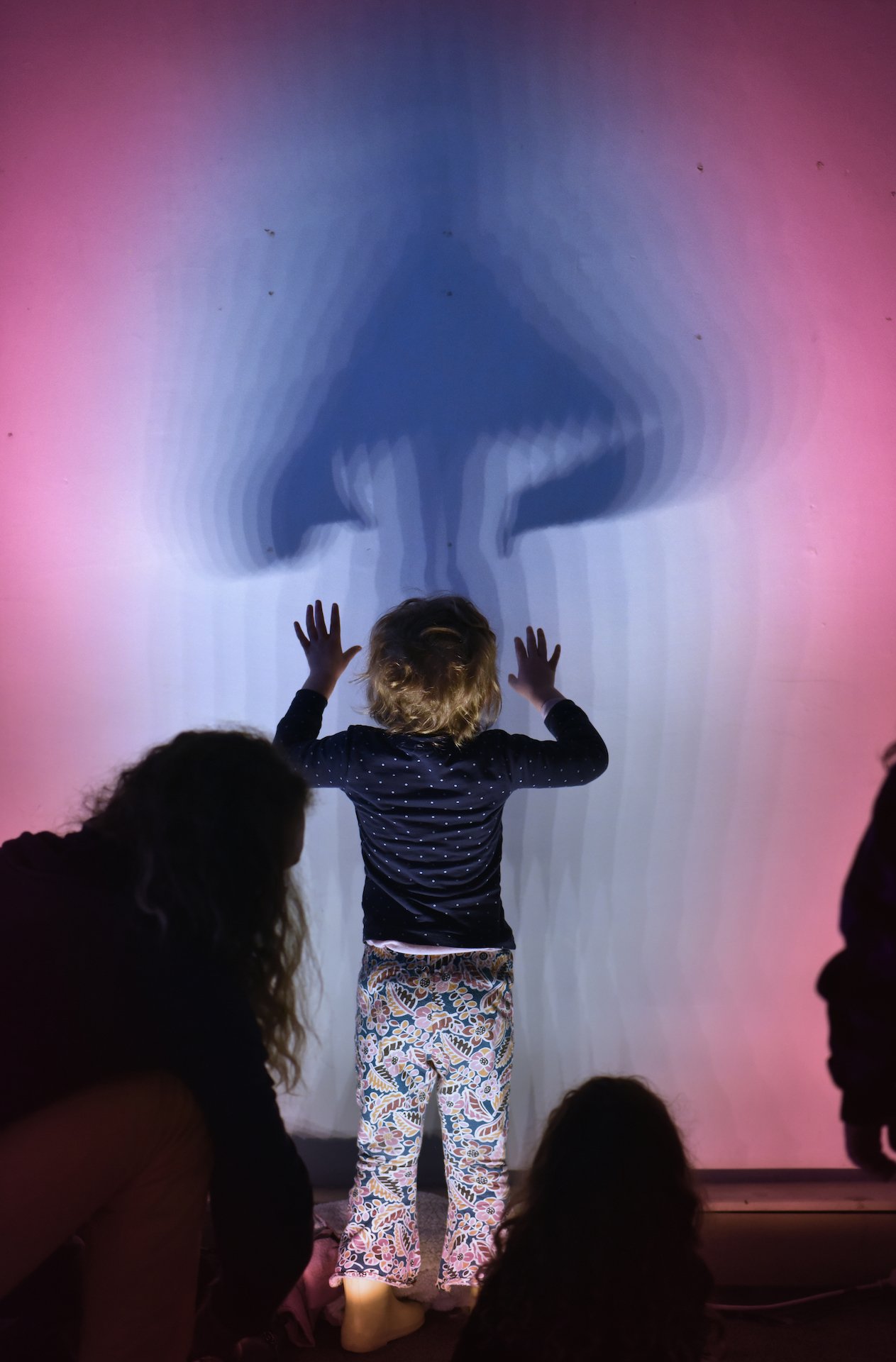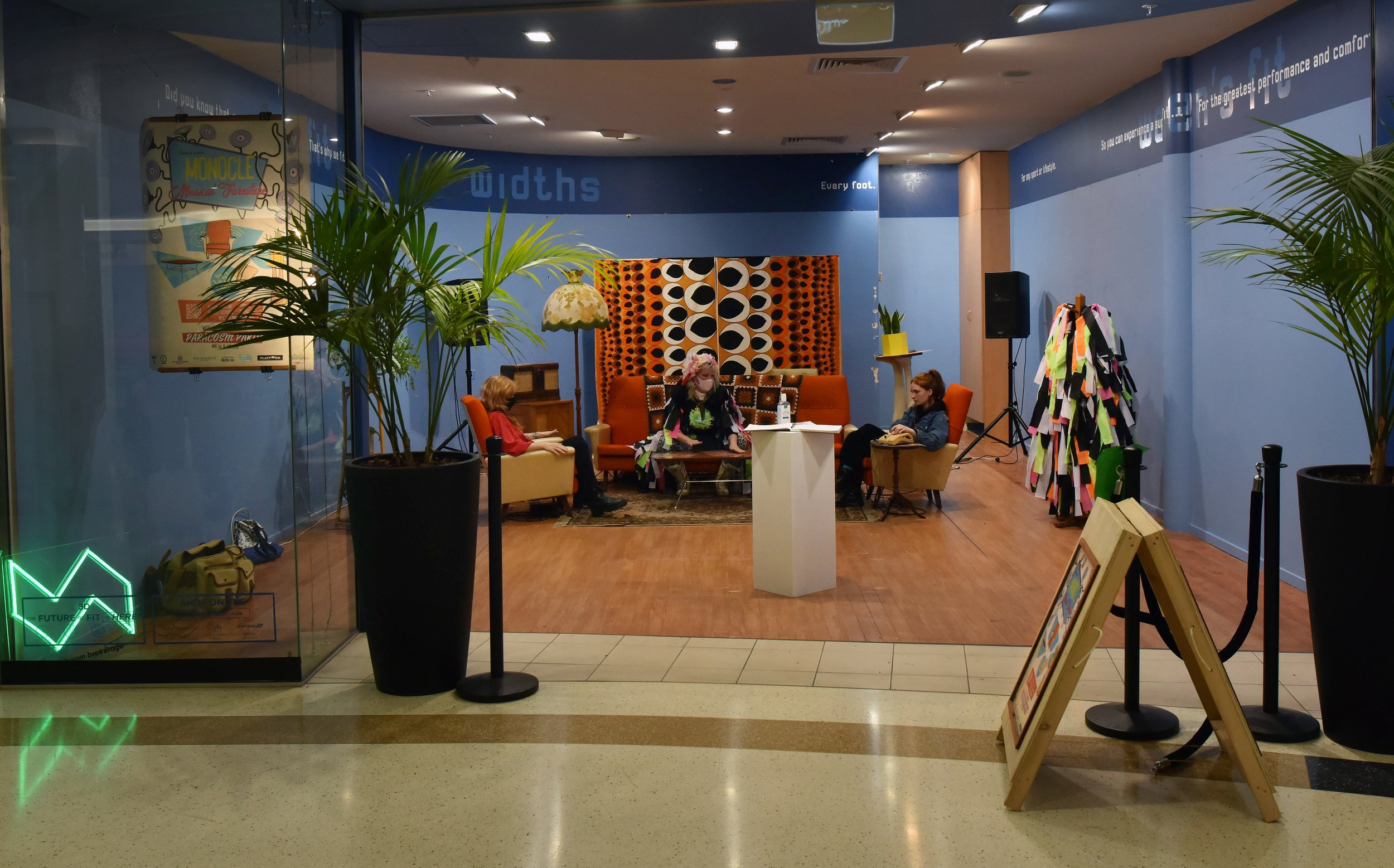Project 63 - Monocle - Musical Furniture (The Platform Project)
Monocle - Musical Furniture
1 - 27 May 2022
Spectacle: Jess Covell and Chris Miller
Paracosm Party: Hilary Faul (Koizilla), Ayumu Kobayashi (AKOBA, Glad Rabbit), Jayde Medder (Centre Negative, Denudes, Mary Berry), and Chris Miller (The Entire Alphabet, Ha The Unclear, The Something Quartet, Coin Laundry, Alizarin Lizard)
165 George Street, the Meridian Mall, 343 George Street
Spectacle Dunedin: Monocle — Musical Furniture
For the month of May, George Street, Ōtepoti was animated by a participatory sonic project called Monocle — Musical Furniture, a multi-sensorial, immersive experience created by Spectacle Dunedin founders Jess Covell and Chris Miller. In each of the three vacant locations along George Street, Jess and Chris sequentially staged and opened to the public a lounge with bright orange furniture and décor with a retro aesthetic. As the Musical Furniture in the project’s title suggests, the various lounge objects were in fact hybrid artworks offering sounds and comfort. One of the most popular hybrid works was an armchair-drumkit — a winning combination that transformed armchair tapping into actual drumming through the placement of triggers connected to computers and speakers. Tapping the chair’s arms or the foot pedal generated kick, snare, and high-hat drumbeats and a sense of actually playing the drums. Such hybrid works in a comfortable, retro environment welcomed passers-by to have a seat, relax, and make music at the same time.
Spectacle’s Monocle — Musical Furniture was commissioned by Dunedin Dream Brokerage’s The Platform Project to respond to the infrastructural upgrade in the retail precinct of George Street. If the upgrade threatened to deter the public from visiting the city centre, Jess and Chris’s participatory project served to attract and draw people back through music and new art experiences. By offering an opportunity for social encounters and play in unoccupied shops, Monocle — Musical Furniture generated a spark of excitement in once vibrant spaces and their surrounds. Following the economic and social impacts of Covid, Jess and Chris’s project sought to bring people together and to signal the revitalisation of the city centre currently underway. Participatory projects like Monocle — Musical Furniture embody the connection between art and community to restore wellbeing.
Monocle — Musical Furniture opened on the 1st of May 2022 at 165 George Street with a public performance by Paracosm Party, a group of Ōtepoti Dunedin musicians including Hilary Faul (Koizilla), Jayde Medder (Centre Negative, Denudes, Mary Berry), Chris Miller (Alizarin Lizard, Coin Laundry, The Entire Alphabet, Ha The Unclear, The Something Quartet), and Ayumu Kobayashi (AKOBA, Glad Rabbit). In addition to providing entertainment, the intention of this performance was to demonstrate the full range of capabilities offered by each piece of musical furniture. This approach served an important function as the synthesiser technology devised by Jess and Chris, and installed by Chris, was ingeniously embedded in unfamiliar locations and activated by a range of interactions, such as tapping the vinyl-clad arms of an orange armchair.
Configured to resemble a lounge setup comprising a couch and coffee table in the centre, an armchair either side with a radio instrument and landline phone instrument respectively adjacent to each, and a pot plant-instrument near the latter, Monocle — Musical Furniture welcomed individual musician-participants and groups of people who could perform as an impromptu band. One person could play the drums while seated in one of the armchairs, while opposite, another person could turn various dials and switches on the modified landline phone to produce a range of synthesised tones in conjunction with the phone’s keypad. Meanwhile, a third person might play the most unusual and unexpected instrument of the installation, a pot plant in a plant holder resting on a small high table with upturned mannequin legs as a support. Designed to be played either by itself or in synthesised conversation with the phone, the pot plant instrument similarly emitted an array of synthesised sounds created by comparable dials and switches. However, a unique feature of this instrument was an additional theremin-like, haptic affordance embedded in one of the mannequin’s legs. While a traditional theremin produces varied pitches by a hand interacting with invisible sensors or waveforms of sound, the pot plant instrument’s theremin required the participant to press their hands along the sound-generating strip on the mannequin’s leg. This interface restored the sense of touch and tactility typically involved in playing musical instruments.
To complement (or disrupt) these synthesised sounds, the long couch could accommodate three or more people tapping the coffee table connected to effects pedals by way of a contact microphone clamped to the table. The technological components for this instrument were hidden in a stack of hollowed out National Geographic magazines. Similarly hidden, although in an already-existing piece of transmitter technology, was the radio instrument positioned on a tall cabinet. As with the phone and pot plant, the radio instrument operated by twisting, turning, and flicking dials and switches to produce synthesised sounds. However, in relation to the pot plant instrument, the radio incorporated a theremin-type modality that unlike the pot plant, generated sound by obscuring or allowing light to interact with a blue, light-sensitive button. Chris described this feature as an “optical theremin” — one that, from the perspective of the radio, depended on its capacity to “see” or register the presence of light. To varying extents Spectacle’s repurposing of furniture amplified the properties or ergonomic functions of each hybrid work. As objects that already exist to transmit sound, such as the radio and phone, Jess and Chris worked to incorporate new capabilities while also riffing on the distortion, crossed signals, white noise, and chirps historically produced by these communication technologies.
The visual, 1970s retro aesthetics of Monocle — Musical Furniture played an important and complementary role to the synthesised sound produced by the hybrid works. Conceptually the retro look referenced the development of polyphonic synthesisers in the 1970s and the advent of digital synthesisers in the 1980s. Visually and sonically, Jess and Chris’s immersive installation reflected the explosion of early synthesiser technology and the predominance of digital synthesisers in contemporary music and performance today. Even the radio, which predates this era, references the earliest proto-synthesiser technology of the 1930s–1950s and one of the earliest companies responsible for pioneering synthesisers, RCA, or the Radio Corporation of America. Relevant to the advent and development of synthesiser technologies, the range of furniture, communication, and sound devices also served to draw in people from broad age demographics. An elderly person might be drawn in by the presence of the radio, middle-aged people by the 1970s furniture, and young people by the retro style. Of course, if Jess, Chris, or members of the public were making music by interacting with pieces of furniture, the curiosity of passers-by was piqued, and they were drawn in.
These visual and sonic attributes brought together by Jess and Chris were ultimately guided by an ethos of art as a medium of inclusivity. Monocle — Musical Furniture was designed to be bright, colourful, and inviting. By locating the project in vacant shop spaces, Jess and Chris’s project removed any barriers people may feel when entering a dedicated art environment. While participatory or community projects can occur successfully in formal art galleries, the location, warm, retro aesthetic, and non-traditional musical furniture instruments of Monocle — Musical Furniture together oriented the project strongly towards the widest sense of community possible. Oftentimes, a spontaneous encounter with an unexpected art project provokes a particularly open and engaged experience. By drawing on a wide range of participatory art mediums, Jess and Chris created an especially inviting interactive experience for visitors who chanced upon Monocle — Musical Furniture and those who made a special trip to town to participate or view one of the performances. The project also drew in pre-school age children and their caregivers, and people interested in music and interactive experiences.
The expansive nature of Jess and Chris’s project reflects the similarly open, expansive approach of their arts collective, Spectacle Dunedin, at the level of collaboration. For the closing performance, Jess and Chris welcomed back Paracosm Party to perform a spectacle involving music, a lighting extravaganza, and specially designed costumes. The event served as a celebratory culmination of the successful project and brought together many of the community participants and musicians. In an earlier project this year, the arts collective collaborated with other musicians and performers in an event entitled Spectacle Presents: Disturbance at the Dunedin Fringe Festival during March 2022. This open, collaborative approach is one of the stand-out attributes of Spectacle as the collective’s fluidity allows Jess and Chris to focus intensely on a project of their own creation, and to work with other creatives to enhance the work of all participants. In the latter arrangement, Spectacle’s collaborations invite cross-genre interventions between performers from different disciplines and in turn, cross-over audiences. Such interdisciplinary performances are vital for the flourishing of vibrant arts communities.
After a difficult two and a half years of Covid restrictions (that were necessary), isolation, illness, and loss in a small city undergoing significant infrastructural refurbishment, events and projects such as Monocle — Musical Furniture serve important community needs. They bring people together safely to enliven spaces undergoing change and revitalisation. Projects succeed when they, and the practitioners that drive them, make as many people as possible feel welcome and invited. In an era of heightened division and increasing polarisation, participatory and community-oriented art projects enable people to interact and express themselves in unique and potentially positive ways for the wellbeing of all.
By Robyn Maree Pickens
Jess Covell and Chris Miller (Spectacle)
Project Director Jess Covell is the driving force behind Spectacle Dunedin with a passion for facilitating and organising temporary happenings that celebrate arts and culture within Ōtepoti. As an installation artist, her pieces communicate whimsy and interactivity, creating immersive environments with escapist elements.
Chris Miller (Bugs), Music Director for Spectacle Dunedin, is a multi-instrumentalist with an obsession for rhythm/polyrhythms and odd time signatures. He currently performs/records with The Entire Alphabet, Ha The Unclear, Coin Laundry, The Something Quartet, and Alizarin Lizard. As well as performing, Miller composes original pieces for everything from film music to art installations, promotional material to game music.
The pair both graduated from the University of Otago, Covell with a BA in Music, Miller a BMus with Honours. Together, they have produced numerous creative endeavours from music events to micro music and art festivals, exhibitions, music videos and more.
Jess Covell and Chris Miller (image by Amanda Konijn)

